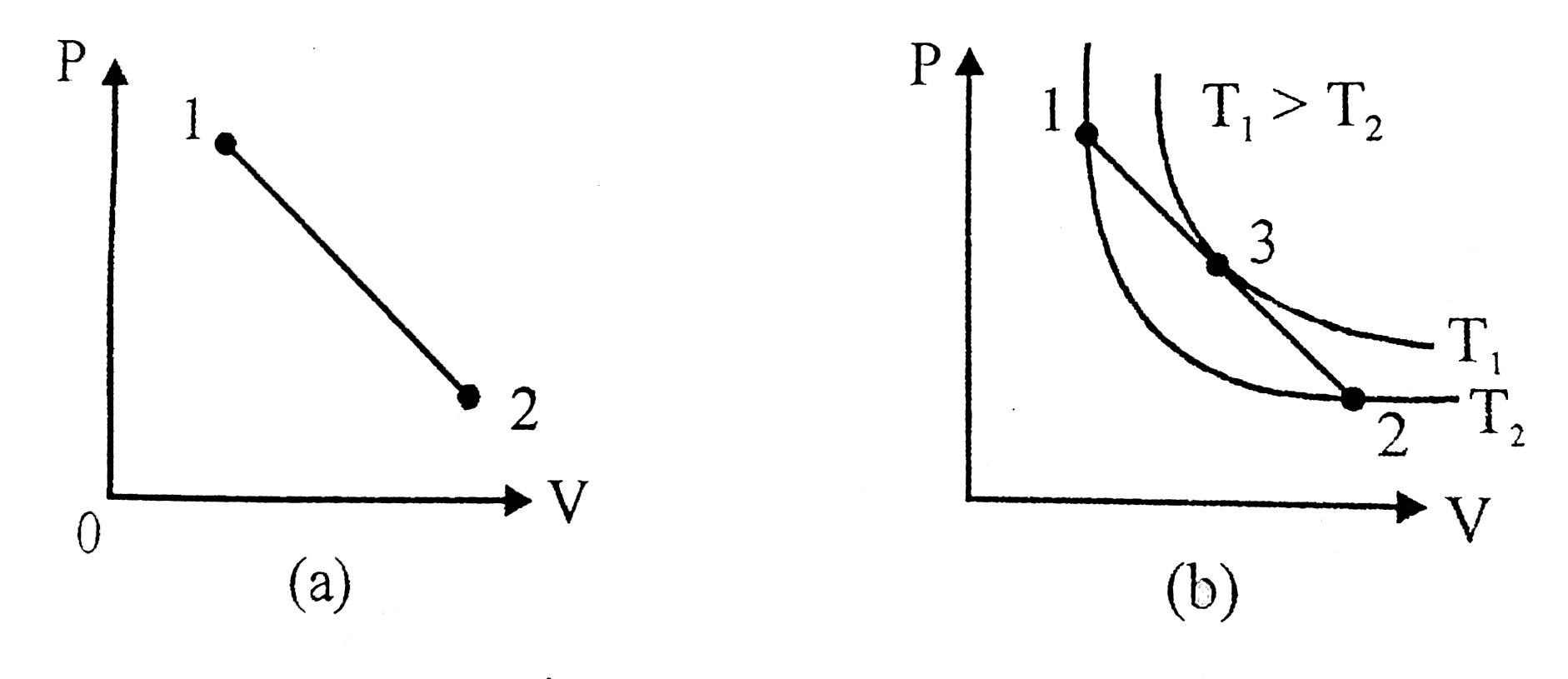A gas is inside a cylinder closed by a piston. The piston is held from above by a spring whose elastic properties obey Hooke's law. Produce a rough sketch, in the pV− coordinates, of the curve that represents the change in state of the gas upon heating and determine the work that is done in the process if the volume of the gas varies from v1 to v2 and the pressure varies from p1 to p2.
Step by step video & image solution for A gas is inside a cylinder closed by a piston. The piston is held from above by a spring whose elastic properties obey Hooke's law. Produce a rough sketch, in the p V- coordinates, of the curve that represents the change in state of the gas upon heating and determine the work that is done in the process if the volume of the gas varies from v_1 to v_2 and the pressure varies from p_1 to p_2. by Physics experts to help you in doubts & scoring excellent marks in Class 11 exams.
Updated on:21/07/2023Topper's Solved these Questions
Similar Questions
Knowledge Check
A gas is filled in the cylinder shown in fig. The two pistons are joined by a string. If the gas is heated, the right piston will
 Amove toward leftBmove toward rightCremain stationaryDnone of these
Amove toward leftBmove toward rightCremain stationaryDnone of theseγ represents the ratio of two specific heats of a gas. For a given mass of the gas, the change in internal energy when the volume expands from V to 3V to constant pressure P is
A3PV(γ−1)B3PV(γ+1)C2PV(γ+1)D2PV(γ−1)
P−V graph was obtained from state 1 to state 2 when a given mass of a gas is subjected to temperature changes during the process the gas isAHeated continuouslyBCooled continuouslyCHeated in the beginning and cooled towards the endDcooled in the biginning and heated towards the end
A gas is enclosed in a cylinder with a freely movable piston. The load on the piston is gradually decreased. The temperature of the gas can be changed by placing the cylinder in hot and cold heat reservoirs. The figure shown P−Vgraph of such a cylinder. What intermediate can be drawn the nature of change in the temperature of the gas ?
 " "
" " 
View SolutionIf the ratio of specific heat of a gas of constant pressure to that at constant volume is γ, the change in internal energy of the mass of gas, when the volume changes from V to 2V at constant pressure p is
View SolutionIf the ratio of specific heat of a gas of constant pressure to that at constant volume is γ, the change in internal energy of the mass of gas, when the volume changes from V to 2V at constant pressure p is
View SolutionIn figure, P−V curve of an ideal gas is given. During the process, the cumulative work done by the gas

View SolutionThe volume of one mole of an ideal gas changes from V to 2V at temperature 300 K. If R is universal gas constant, then work done in this process is
View Solution

